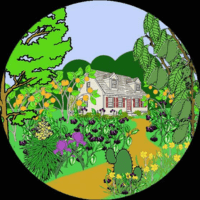Northern Spicebush as Food, Flora & at the Farmers' Market
Spicebush is not well known but it is a highly versatile plant. It’s native to North America, and the most important host plant of the spicebush swallowtail butterfly.
Native Americans used dried fruits as a spice and the leaves for tea. Native Americans and settlers used Spicebush for its medicinal qualities; extracts have been used for drugs, including anti-arthritic, diaphoretic, emetic and herbal steam; early settlers and land surveyors used spicebush as an indicator species for good agricultural land; dried fruits have been used in fragrant sachets; and pollinators such as the spicebush swallowtail, Papilio troilus (L.) love this plant! It’s one of the first post-winter plants to flower here at HEPPY™. The Spicebush tolerates wet soil and drought, and full sun or full shade. the Northern Spicebush is a forest stud!
________________________________________
see our list of 400 edible plants
YouTube channel (please subscribe)
Northern Spicebush in garden design, permaculture, and organic gardening
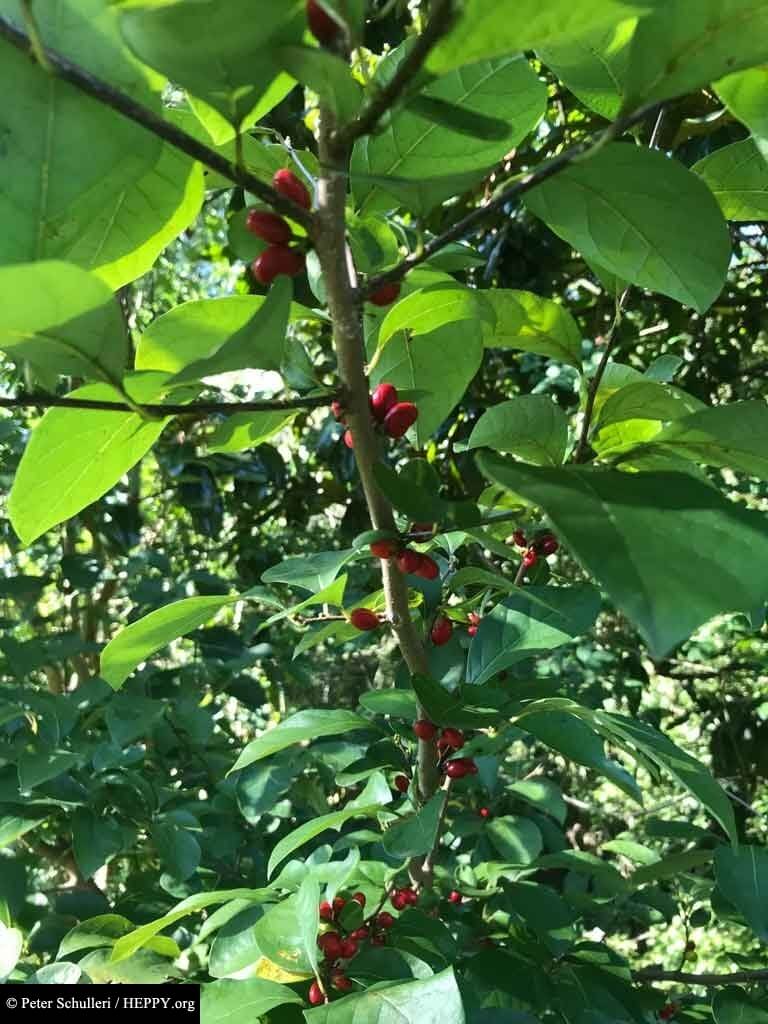
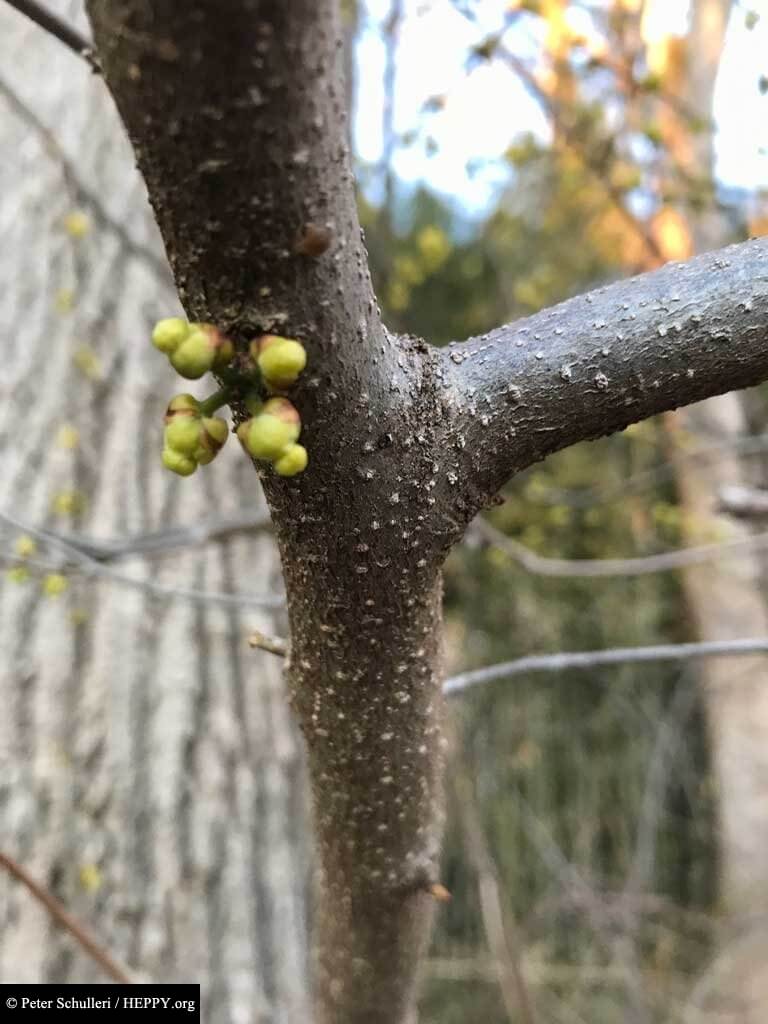
Northern Spicebush, Lindera benzoin
common names: Common Spicebush, Benjamin Bush, Fever Bush, and Wild Allspice
Fact Sheet
Zone: 4 to 9
Height: 6 – 12 feet
Native: North America
Bloom Time: March – April
Bloom Color: many small yellow flowers and fragrant
Fruit Maturity: August – November (only female plants produce fruits called, drupes)
Self-fertile: no (dioecious)
Sun: part shade (will tolerate full shade and full sun)
Water: medium (will tolerate drought and wet soil)
Soil: forgiving (wide range)
Maintenance: forgiving
Growth Rate: slow
Deciduous or evergreen: deciduous
Edible¹: flavoring, spice, tea (discussed below)
Medicinal²: yes (discussed below)
Commercial viability: strong (discussed below)
Family / Genus: Lauraceae / Lindera
Remarks: attracts butterflies and birds, and tolerates deer and the Black Walnut
As an Amazon Associate, HEPPY earns from qualifying purchases (paid link).
Here’s a list of all the products we truly use and trust.
Northern Spicebush landscaping and garden ideas
native to North America, it grows across the Eastern half of the States.
Landscape Architecture
in landscape architecture, the Spicebush is an excellent accent plant — to grow along the side of a home, fence, treeline. it fits in backyard and front yard landscaping ideas.
it’s wide growing range is equaled by its incredible versatility. full sun or full shade, wet soil or drought, it grows best as an understory forest plant (growing under the canopy of tall forest trees / in shade). pollinators thrive on Northern Spicebush because it’s one of the first plants to bloom post-winter (we see only the Red Maple blooming earlier). the Spicebush Swallowtail (Papilio troilus) is one pollinator.
Garden Ideas
like the native pawpaw and native persimmon, the Spicebush reportedly grows frequently in a clonal colony (a thicket of, essentially, identical individuals all originating vegetatively, not sexually, from a single ancestor plant). overall, it grows slowly and and is non-invasive.
Spicebush are either male or female (dioecious). both male/female flower but only the females have drupes (a berrylike fruit). its fruit is a beautiful deep red color, shiny, about 1/4 to 3/8 inches, oblong (ellipsoid), with a single seed.
As an Amazon Associate, HEPPY earns from qualifying purchases (paid link).
edible Spicebush - how to use it as food, drink and medicinally
1, 2 HEPPY cannot take any responsibility for any adverse effects from the use of plants. Always seek advice from a professional before using a plant for food or medicinally. This information is intended for educational purposes only and should not be considered as a recommendation or an endorsement of any particular medical or health treatment.
research found that virtually all parts of the Spicebush is edible or was used for medicinal purposes except for the roots.
Edible berries
early settlers used the Spicebush berries as an Allspice substitute (Foster and Duke, p. 283). in the modern kitchen, it can be used to make tea, in baking (eg, Gingerbread), ice cream and rice pudding, and flavoring of meat.
Recipes
Spicebush in acorn jelly. or, how about this recipe for Spicebush Ice Cream! our full recipe page — recipes for using it as a tea, for ice cream and as a rub — is being built. please donate time or some other resource!!
Medicinal Plants and Herbs — medicinal qualities
medicinally, The Herb Society of America provided outstanding information that peaked our interest. “Spicebush had multiple medicinal uses by Creek, Cherokee, Rappahannock, Mohegan and Chippewa tribes, who also used the plant to make a beverage and to flavor game.”
Duke and Foster found that American Indians used the Spicebush bark to make tea as a “blood purifier” and for sweating, colds, rheumatism and anemia; and Spicebush berries to make a tea for coughs, cramps, delayed menses, croup and measles. Settlers used twigs to make a tea to treat colds, fevers, worms, gas and colic; bark to make a tea to expel worms, for typhoid fevers and a diaphoretic for other fevers; and berries to prevent gas and flatulence and colic.
stem bark extract strongly inhibits the growth of Candida albicans, a yeast organism found in the mouth, vagina and anus (Spicebush extract inhibited yeast better than 53 other species studied); and oil from the fruit was applied to treat chronic rheumatism, bruises, muscles and joints. (Duke and Foster, p. 283). And if all the above isn’t impressive enough, Spicebush leaves contain a small amount of camphor and can be used as an insect repellent (unverified by HEPPY at the time of writing).
HEPPY will explore how this very common and forgotten plant is edible and medicinal. we’ll add content as we learn / verify!
As an Amazon Associate, HEPPY earns from qualifying purchases (paid link).
commercial viability of the Spicebush
the commercial viability is strong. the resource is free and abundant across the entire Eastern half of the States.
Farmers’ market or cottage food industry
Spicebush products are unique (has a ‘wow’ factor) and it is a sustainable forest product. it is very marketable. Food flavoring & tea items (fresh drupes, leaves, twigs), fragrance sachets (virtually all parts), and its essential oils are described “woody-floral”, “grassy-eucalyptus” and “citrus-spicy” fragrances.
Commercial or private landscaping
cultivating and planting Spicebush is entirely inline with sustainable landscaping 😉 it’s such a beautiful, elegant plant. pest and disease free, it grows perfectly in full and part shade.
currently, sustainable landscaping is a completely foreign concept to the commercial landscape industry. this affords YOU an opportunity. be ‘green’ and smart and work with an easy plant 😉
There’s a lot to explore and we invite interns and volunteers to focus on the commercial viability of Spicebush here at HEPPY.
Spicebush growing at HEPPY™
this lovely plant grows naturally at HEPPY. and it carpets the beautiful neighboring forests. Spicebush line the stream running through HEPPY, and carpets the lower, flatter portion of the neighboring forest.
Pruning
Spicebush needs no care, other than routine pruning (dead wood) or removing climbing vines from its trunk.
it’s a great plant with abundant yellow flowers, red berries and showy fall colors. and after all the leaves have fallen, the red drupes remain on the plant.
Harvesting
this video was taken in early-September (zone 7, Maryland). we identify the Spicebush aroma, show its berries (drupes) and the seed. this forest food fruits in early-September. as a forest food, dried leaves can be used as a tonic/tea, and fresh leaves are used when cooking meat. all plant parts were used by many North American indigenous people.
thank you for viewing! and please be sure to subscribe to our youtube channel!
the Northern Spicebush buds in mid-March. by September, beautiful red berries (drupes) are ready to be picked.
the blooms are some of the first to flower as zone 7 transitions from winter to spring. pollinators depend on the Spicebush.
it typically (naturally) grows as an understory plant. exposure to a 1/2 day of sun promotes a heavy crop of drupes.
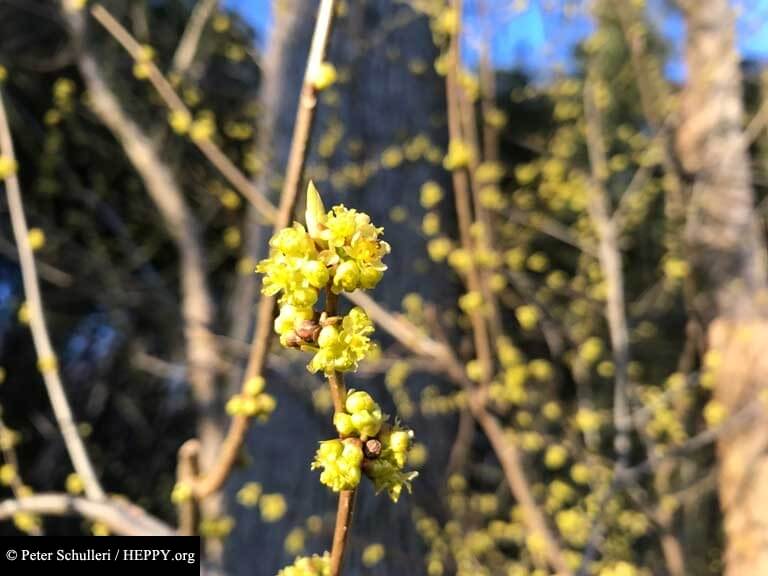
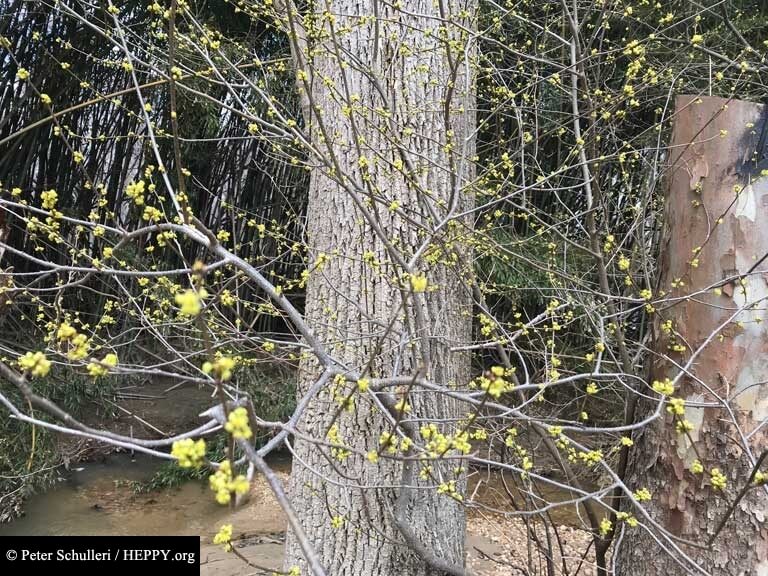
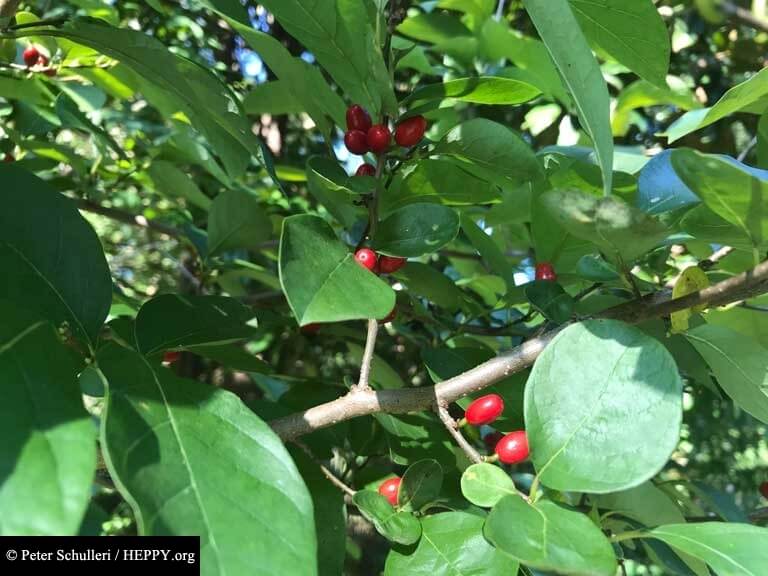

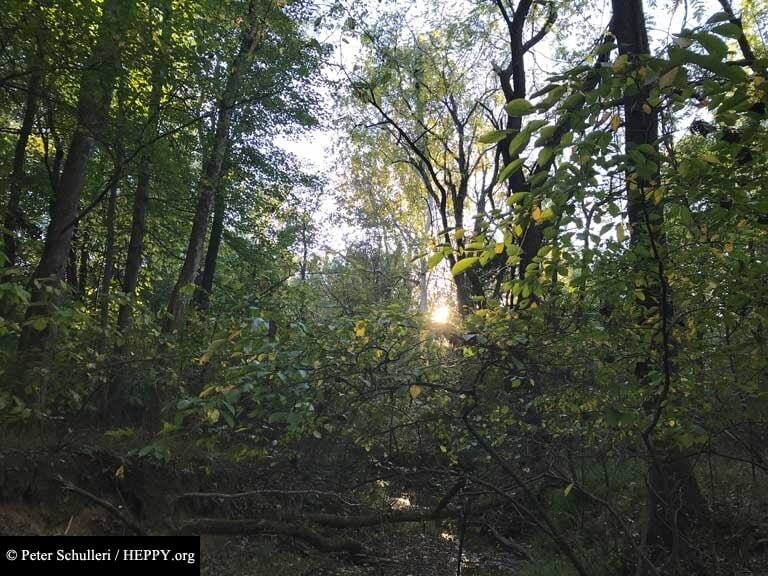
References
Monticello
The Morton Arboretum
The Herb Society of America
USDA PLANTS Database
James A. Duke and Steven Foster: A Field Guide to Medicinal Plants and Herbs of Eastern and Central North America
